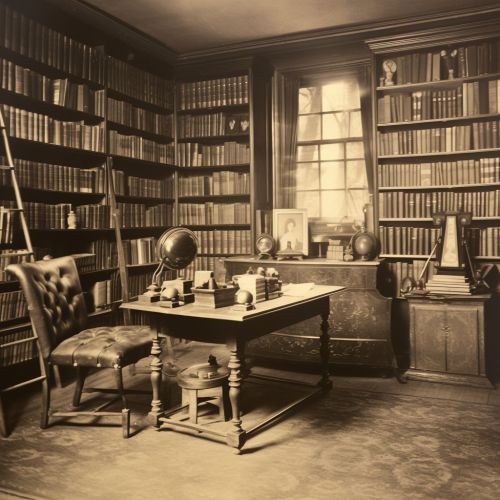Psychoanalytic theory
Introduction
Psychoanalytic theory is a significant domain of psychology that was developed by Sigmund Freud in the late 19th and early 20th centuries. An influential and controversial figure, Freud's work forms the basis for much of modern psychology's understanding of the human mind and behavior. This theory is primarily concerned with the study of human psychological functioning, both in its normal and pathological aspects.


Origins and Development
Psychoanalytic theory originated from Freud's clinical work with patients suffering from hysteria and other neurotic disorders. He initially collaborated with Dr. Josef Breuer, an older colleague who had discovered that encouraging patients to talk about their symptoms could sometimes relieve these symptoms—a process they called catharsis. Freud further developed this into the technique of free association, where patients would report their thoughts without reservation, allowing for the analysis of their unconscious mind.
Key Concepts
Psychoanalytic theory is based on several key concepts, including the unconscious mind, psychosexual development, defense mechanisms, and dream symbolism.
The Unconscious Mind
The unconscious mind is a key concept in psychoanalytic theory. Freud proposed that the unconscious mind is a reservoir of feelings, thoughts, urges, and memories that are outside of conscious awareness. These elements can influence behavior and emotions, even though individuals are unaware of their existence.
Psychosexual Development
Freud's theory of psychosexual development suggests that childhood experiences play a pivotal role in the development of adult personality and behavior. Freud proposed five stages of psychosexual development: the oral stage, the anal stage, the phallic stage, the latency stage, and the genital stage.
Defense Mechanisms
Freud and his daughter, Anna, introduced the concept of defense mechanisms. These are unconscious psychological strategies used by the ego to manage conflict between the id (primitive desires) and superego (moral and societal pressures).
Dream Symbolism
Freud's work on dream symbolism led to his book, "The Interpretation of Dreams," where he proposed that dreams are a form of wish fulfillment, and that dream content is related to unconscious desires.
Criticisms and Controversies
Despite its significant influence, psychoanalytic theory has been the subject of criticism and controversy. Critics argue that the theory lacks scientific validity, is untestable, and overemphasizes sexual motivations. Moreover, some argue that Freud's theories are sexist, as they often portray women as inferior to men.
Impact and Influence
Despite the criticisms, the impact of psychoanalytic theory on psychology, and other disciplines like literature, film, and cultural studies, is undeniable. It has provided a new way of understanding human behavior and has influenced many other psychological theories.
